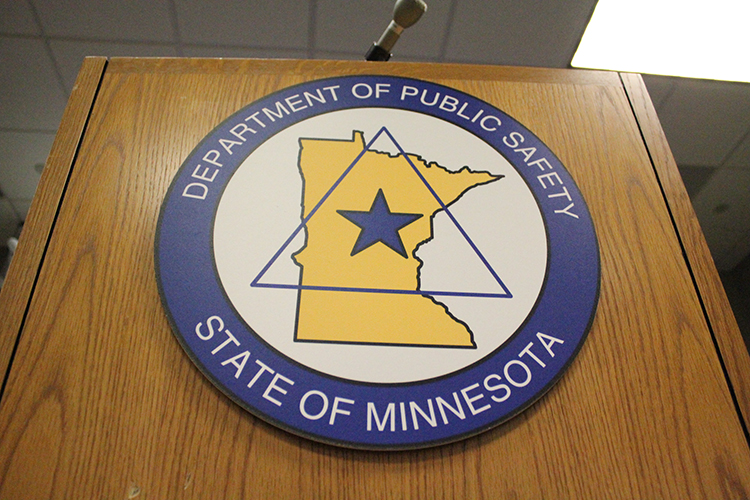12 important things DPS did in 2017
Dec. 28, 2017

|
|
It has been a busy year here at the Department of Public Safety, but with 15 divisions and about 2,200 employees, it’s hardly a surprise. As the year comes to an end, we thought we’d give you a quick list of twelve of the most important things DPS did in 2017.
The Bureau of Criminal Apprehension began using microcrystal drug testing, a procedure that dramatically speeds turnaround time without sacrificing quality. This in turn helps the BCA help criminal justice agencies to get criminals off the streets and those struggling with addiction into recovery faster than ever before.
Emergency Communication Networks launched Text-to-911 after nearly a year of training, testing and planning. The new service will allow you to contact a 911 dispatcher anywhere in Minnesota, even if you can’t talk. Although calling remains the first choice for those who can talk or hear, Text-to-911 will prove valuable for the deaf, hard of hearing, and speech impaired, as well as those in domestic violence, home invasion, or other situations in which talking could put them in danger.
Homeland Security and Emergency Management partnered with ECN and Twin Cities Public Television for a full-scale exercise to test the communication of emergency information on Channel 2.5. For the first time in the nation, emergency information was delivered in four different languages (English, Spanish, Somali and Hmong) in a simulated setting. The drill explored how TPT’s broadcast channel 2.5 (TPT|NOW) can serve as a resource for broadcasting weather, preparedness and emergency response content supporting public health and safety initiatives.
The Minnesota Motorcycle Safety Center trained 5,728 riders during the six-month training season. Not all started as beginners: The intermediate and advanced/expert training courses saw a 19 percent increase in enrollment this year compared to last year.
The Alcohol and Gambling Enforcement Division used news conferences to highlight illegal gambling. As the Twin Cities prepare to host the Super Bowl, they reminded the public that organized sports betting is illegal and therefore has no consumer protections.
The Office of Justice Programs used several methods – including news conferences, social media and blogs – to highlight the growing drug issue in Minnesota. The main takeaway for the public is that law enforcement can’t end this problem alone; they encourage people struggling with drug addiction to seek treatment and ask people whose loved ones have drug issues to encourage them get help.
The Minnesota Office of Pipeline Safety (MNOPS) underwent its annual federal audit, during which auditors reviewed internal processes, procedures, training records, inspection records and travel to observe MNOPS inspections. This year MNOPS scored 100 percent on its annual audit, ensuring that they can obtain the maximum levels of funding for the calendar year.
Changes to Minnesota’s impaired driving law in 2017 improved the way law enforcement officers process and report DWI arrests. The Office of Traffic Safety worked very closely with Driver and Vehicle Services and the Bureau of Criminal Apprehension on the technical changes as well as a significant law enforcement training component to quickly meet the July 1 implementation deadline. Troopers, officers and deputies can now spend more time on the road keeping Minnesotans safe.
The State Fire Marshal Division received NFIRS (National Fire Incident Reporting System) reports from 99 percent of all fire departments in Minnesota. This is important because having more thorough and accurate statistics about fires around the state allows us to better educate the public and fire service to prevent and fight those types of fires. Put simply, we fight fires with facts.
The Minnesota State Patrol has been a leader among state and provincial police for their work in distracted driving. They worked to inform the public of how much more prevalent the problem is (in 2012 there were 1,707 texting and driving citations; in 2016 that number had increased 251 percent to 5,988) and joined law enforcement agencies throughout the state for extra enforcement of distracted driving laws.

